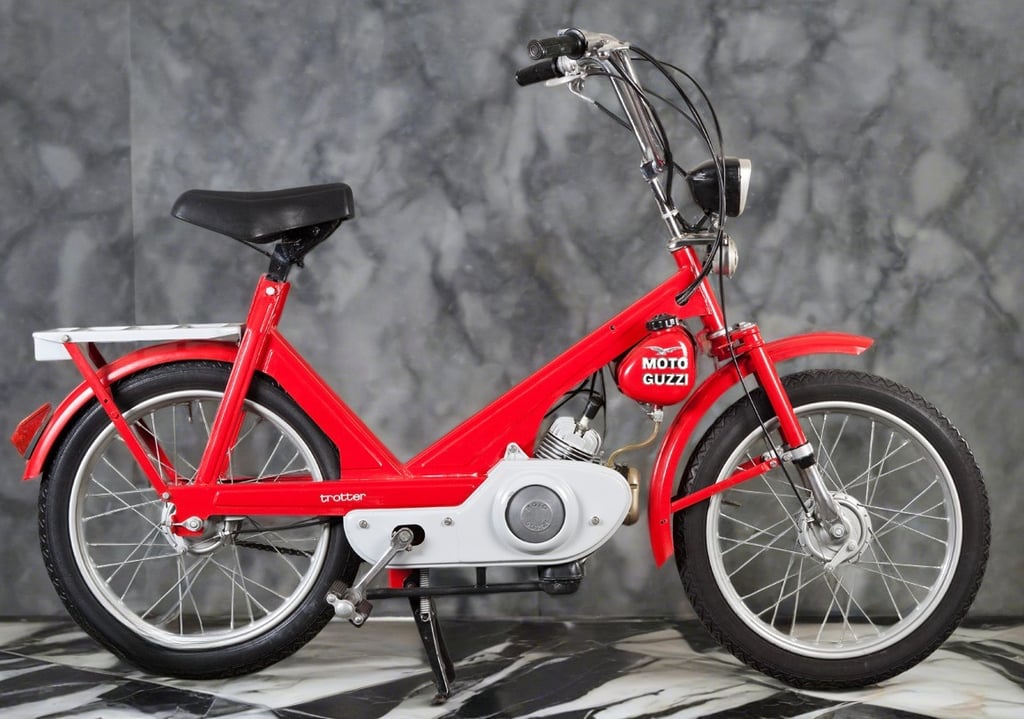The Moto Guzzi Trotter: A Nod to Moped Elegance
The article explores the story of the Moto Guzzi Trotter, a moped introduced by Moto Guzzi in 1967. It discusses the emergence of mopeds as a practical and affordable mode of transportation in the 1960s and highlights the design features of the Trotter, such as its simplicity and utilitarian design. The article also emphasizes the cultural impact of the Trotter, as it became a symbol of freedom and individuality in the '60s moped scene. Despite no longer being in production, the Trotter remains a cherished piece of motorcycle heritage.
MOTO GUZZIITALY TWO STROKECLASSIC MOPEDS1960'S


The Moto Guzzi Trotter: A Nod to Moped Elegance
Moto Guzzi, the illustrious Italian motorcycle manufacturer, has etched its name in the annals of motorcycle history through its iconic contributions. While the brand is widely recognized for its larger motorcycles, a captivating chapter in Moto Guzzi's narrative unfolded with the debut of the 1967 Moto Guzzi Trotter—a moped that seamlessly fused urban practicality with the engineering brilliance that defines Moto Guzzi. This article delves into the captivating tale of the Trotter, unraveling its origins, design, and the indelible mark it left on a transformative era for motorcyclists and enthusiasts alike.
A Shift in Wheels: The Emergence of the Trotter
The 1960s witnessed a cultural and economic resurgence, birthing a transformative era in transportation. In response to the growing need for affordable and accessible urban transport, the lightweight moped emerged as a beacon of practicality. Managing Moto Guzzi at the time, SEIMM played a pivotal role in this movement by introducing the Moto Guzzi Trotter in February 1967. This marked Moto Guzzi's foray into a market dominated by small, nimble, and fuel-efficient vehicles tailored for bustling city life.
Design Ingenuity: A Symphony of Simplicity
The Moto Guzzi Trotter stood as a testament to simplicity engineered for convenience. Boasting a rigid frame and a distinctive telescopic fork made from stamped sheet metal in a V-shape, it catered to various riders, including women. The heart of the Trotter was a modest 40cc single-cylinder engine, propelling it to a top speed of around 40 km/h. Its 2-speed manual transmission and gasoline fuel system underscored utilitarian design, making it a practical choice for the cost-conscious consumer. Beyond necessity, the Trotter embodied a statement of modest elegance.
Cultural Icon: The Trotter's Impact on the '60s Moped Scene
In the vibrant landscape of '60s mopeds, the Moto Guzzi Trotter transcended its role as mere transportation; it became a cultural icon. Offering a sense of freedom and self-reliance, it resonated with a generation that valued mobility and individuality. Amidst crowded city streets dominated by cars and scooters, the Trotter emerged as a chic alternative, capturing the imagination of style-conscious youth. Its presence in the market elevated the status of mopeds from practical choices to trendy, desirable options.
Legacy and Endurance: The Trotter's Timeless Appeal
Although the 1967 Moto Guzzi Trotter is no longer in production, its legacy endures. Revered by vintage moped enthusiasts and collectors, the Trotter represents an era of ingenuity and charm. A coveted prize at auctions and restoration projects, collectors celebrate the Trotter for its historical value and its embodiment of Moto Guzzi's craftsmanship. Despite the passage of decades, the Trotter remains a beloved piece of motorcycle heritage—a tangible link to the past that enthusiasts are dedicated to preserving and cherishing.
